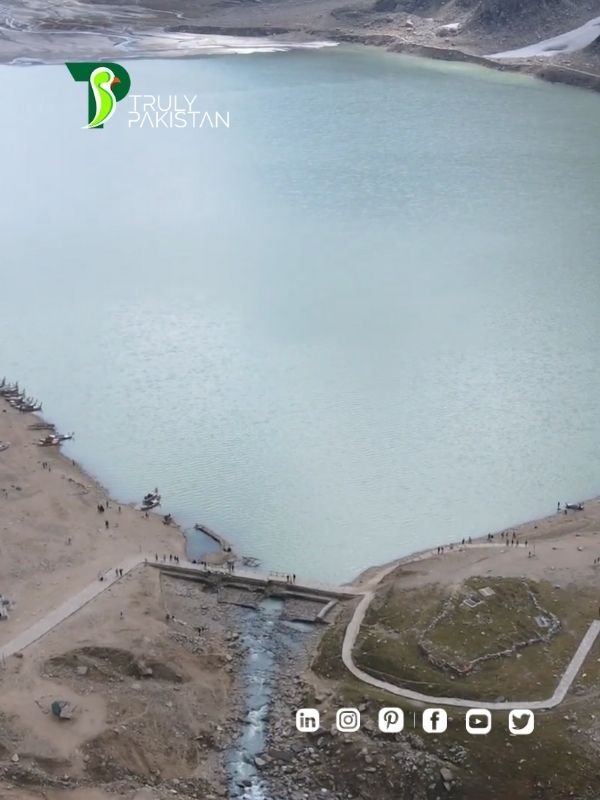Jheel Saif ul Malook – 7 Amazing Travel Tips & Guide
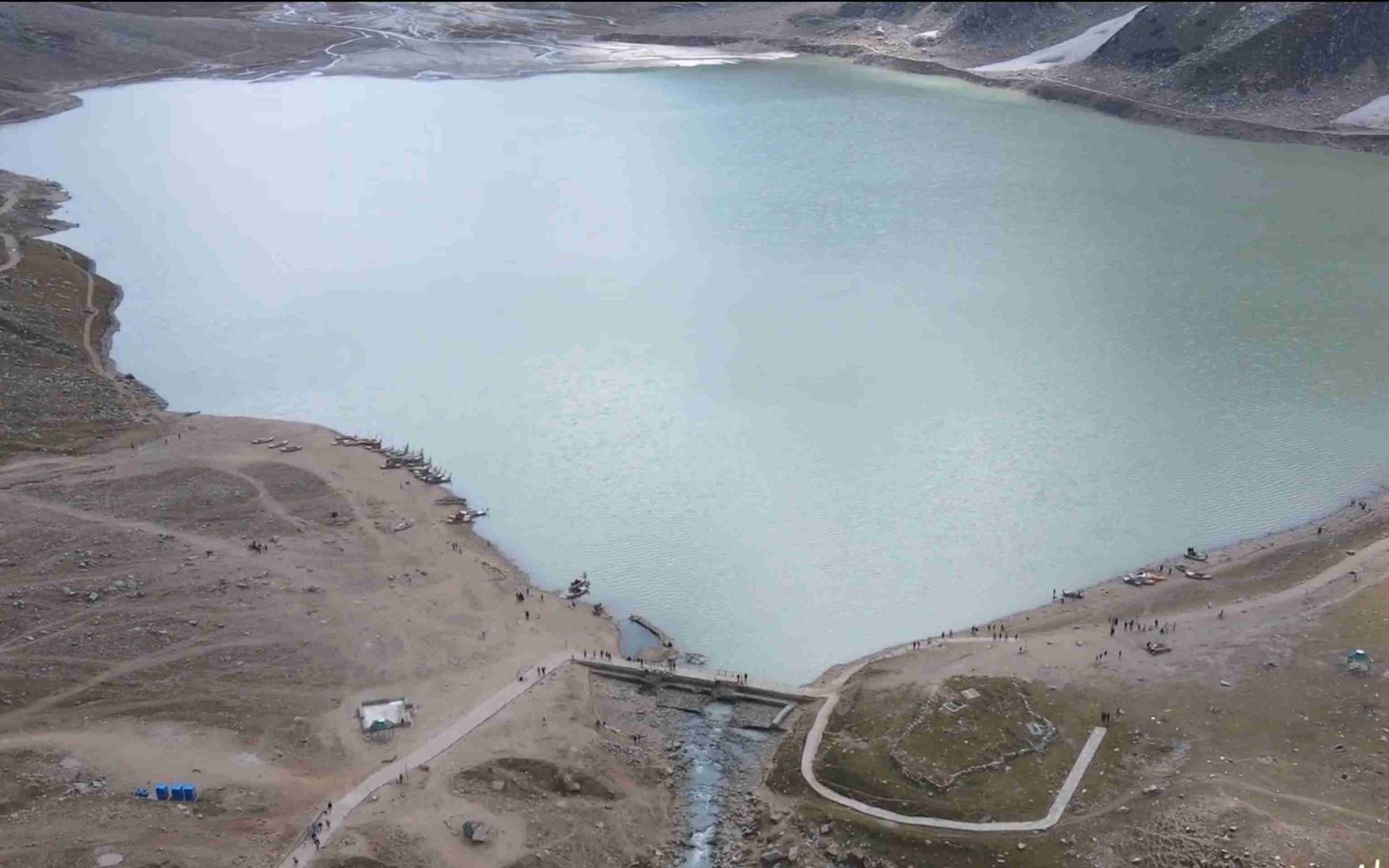

Why Jheel Saif ul Malook Captivates First Time Visitors and Seasoned Travelers
Agree: Standing at 3,224 meters above sea level, Jheel Saif ul Malook is a breathtaking alpine lake that leaves visitors in awe. Its turquoise waters, framed by snow-capped peaks, create a scene that feels like stepping into a postcard. Whether you have read about it in folklore or seen it on travel posters, the first glimpse is unforgettable.
Promise: This guide will walk you through everything you need to know about Jheel Saif ul Malook. From the romantic legend that made it famous, to the best months for visiting, transport options, activities, and safety tips — it is all here in one place.
Preview: We will explore the lake’s fascinating geological formation, its place in local culture, the practical details for planning your trip, and insider tips that make your visit smoother and more rewarding.
Jheel Saif ul Malook at a Glance, Fast Facts for Smart Planning
Location, elevation, area, depth, and park status
Jheel Saif ul Malook is located near Naran in the Kaghan Valley, Mansehra District, Khyber Pakhtunkhwa, Pakistan. It sits within Saiful Muluk National Park, surrounded by the Western Himalayas. The lake lies at an elevation of approximately 3,224 meters (10,578 feet), covers an area of about 2.75 square kilometers, and has a measured maximum depth of around 34 meters (113 feet). It is fed by glacial waters and remains cold year-round.
Seasonal access overview, when roads and services are usually available
The lake is generally accessible from late May to early October, depending on snowfall and road conditions. During peak summer months, jeep tracks from Naran remain open daily, offering rides to the lakeside. Winter access is extremely limited due to heavy snow and frozen paths.
Visitor profile, trip duration, travel styles, family and solo notes
Visitors range from domestic families on day trips to international photographers seeking dramatic landscapes. Most trips are planned as a half-day excursion from Naran, but camping and extended stays are possible in the warmer months. The lake’s high-altitude setting makes it important to plan for extra layers, sun protection, and gradual acclimatization.
The Legend of Jheel Saif ul Malook, A Timeless Love Story
Prince Saiful Malook and Princess Badri ul Jamal, the core narrative
The story of Jheel Saif ul Malook is tied to the romance between Prince Saiful Malook and Princess Badri ul Jamal, a fairy from the mountains. According to local lore, the prince journeyed across distant lands to find the princess after seeing her in a dream. Their love faced trials from supernatural beings, and the lake became the symbolic meeting place in the tale.
Mian Muhammad Bakhsh and cultural roots of the Saif ul Malook poem
Punjabi Sufi poet Mian Muhammad Bakhsh immortalized the legend in his poetic work “Saif-ul-Malook.” His verses blend themes of love, patience, and spiritual struggle, transforming the lake from a scenic landmark into a cultural icon. Many local guides recount parts of the poem to visitors, adding to the immersive experience.
Myth versus fact, separating folklore from verified history
While the love story is a cherished part of local heritage, historians note that the lake’s name and fame also stem from its strategic location along ancient trade routes and its striking alpine beauty. The folklore enriches the visitor’s experience but should be enjoyed as cultural storytelling rather than literal history.
Geographic Marvel, How Jheel Saif ul Malook Formed and Where it Sits
Kaghan Valley and the Western Himalayas context
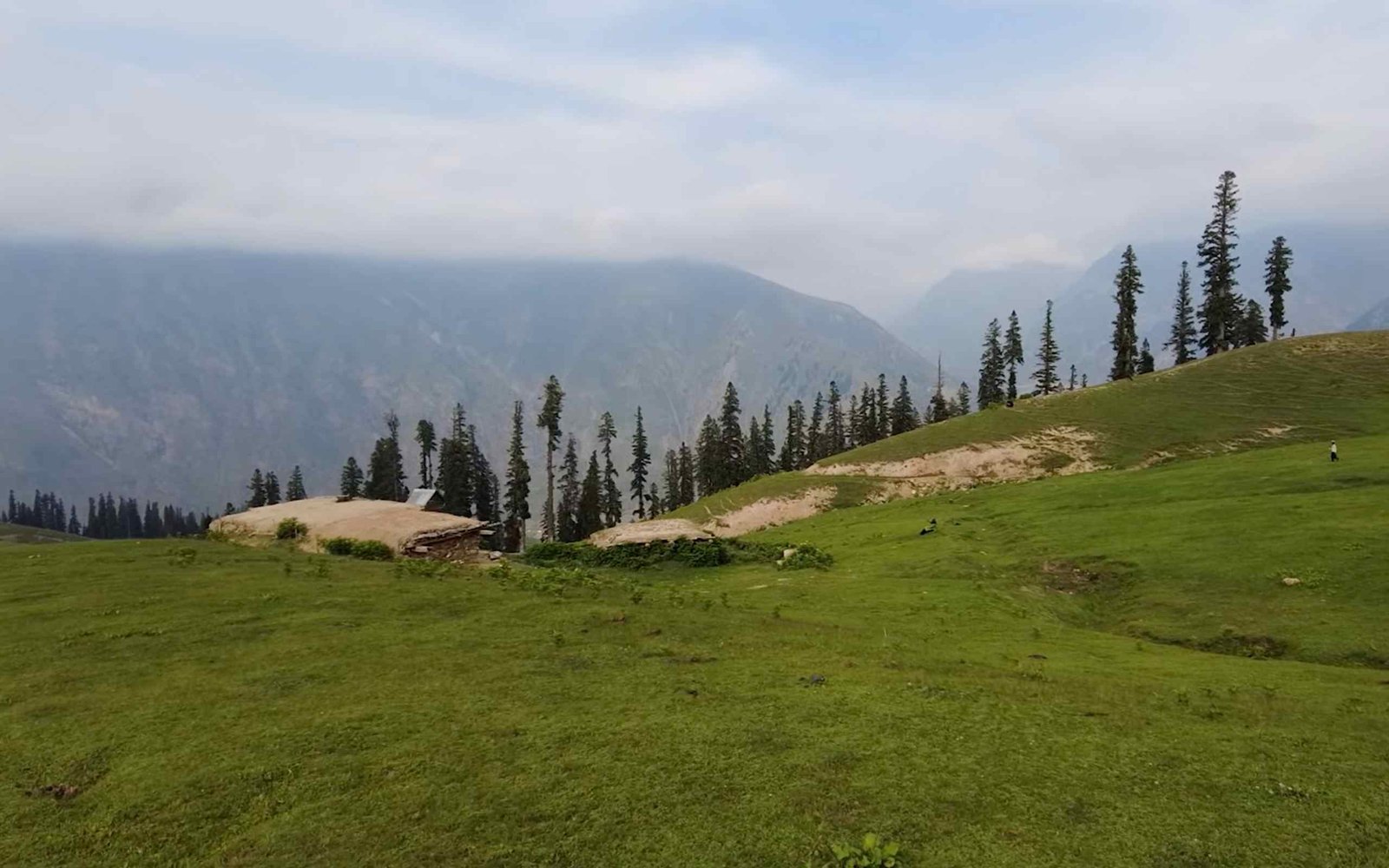

Jheel Saif ul Malook lies in the upper reaches of the Kaghan Valley, part of the Western Himalayan mountain range in northern Pakistan. The valley is renowned for its alpine landscapes, glacier-fed rivers, and snow-draped peaks, with Malika Parbat (5,290 meters) towering above the lake as its most dramatic backdrop.
Glacial origins, lake formation, and surrounding peaks like Malika Parbat
The lake was formed during the Pleistocene epoch, around 300,000 years ago, when glacial activity carved a natural basin. Meltwater from glaciers and snowfields fills this basin, creating the lake’s striking turquoise color, a result of light reflecting off fine glacial silt suspended in the water.
Physical characteristics, elevation and the depth debate
While modern surveys record the maximum depth at approximately 34 meters, local folklore often speaks of “unknown depths.” At 3,224 meters above sea level, oxygen levels are lower, and the water temperature remains near freezing throughout the year, even in summer.
Jheel Saif ul Malook Weather, Seasonal Conditions and What to Expect
Summer (May to September)
During summer, daytime temperatures at Jheel Saif ul Malook range between 10°C and 18°C, with cool breezes and occasional rain showers. Snow can still be seen on surrounding peaks in May and June, while July and August offer the warmest, most accessible conditions. This is the peak tourist season, so expect crowds along the jeep track and lakeside.
Autumn (October)
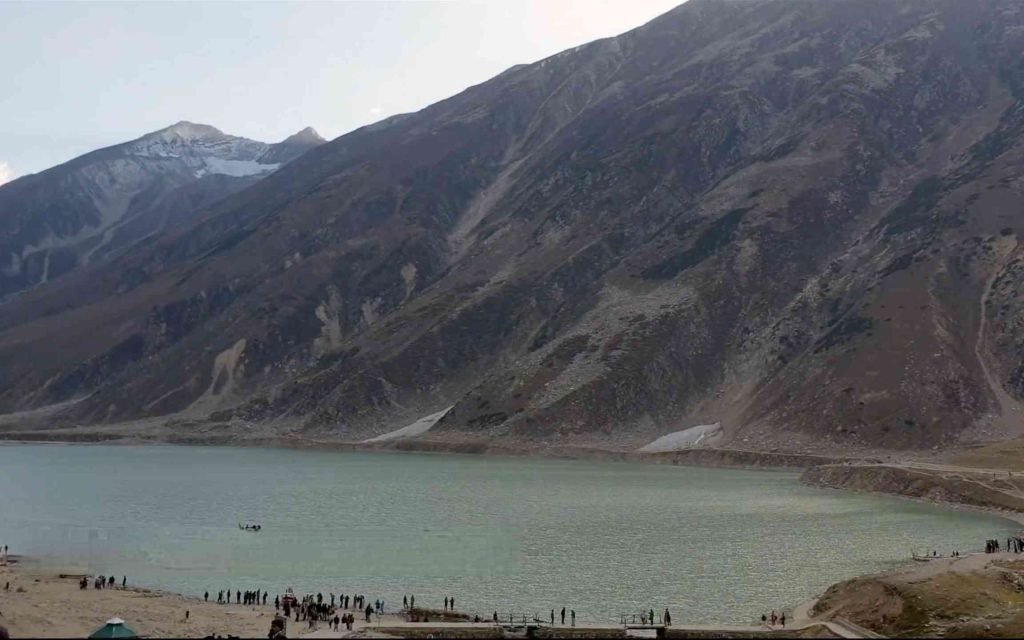

October brings crisp air and daytime highs of 5°C to 12°C. The surrounding slopes turn golden and red, creating stunning photo opportunities. Early snowfall may occur, which can affect jeep accessibility — always check local weather updates before traveling.
Winter (November to March)
In winter, temperatures often drop well below freezing, and the lake’s surface freezes completely. Snowfall is heavy, and the access road from Naran is usually closed. Only experienced trekkers with proper alpine gear and local guides should attempt a winter visit.
Spring (April)
Spring at Jheel Saif ul Malook is transitional. Lower valley snow begins to melt, daytime temperatures rise to 5°C to 10°C, and access improves toward late April. However, the lake itself may still be partially frozen, with jeep routes only opening in late spring or early summer.
How to Reach Jheel Saif ul Malook from Naran, Clear Step by Step Options
Jeep rides, typical rates, duration, where to book, and bargaining tips
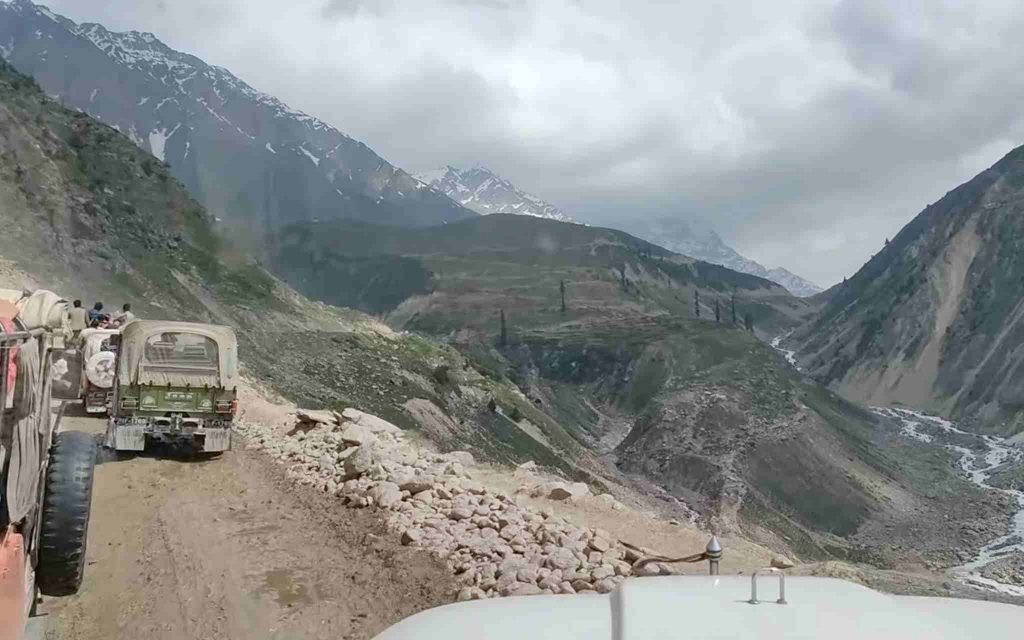

From Naran, the only motorized route to the lake is via rugged jeep tracks. Local 4×4 jeeps can be hired from Naran’s main bazaar, with rates ranging from PKR 2,000 to PKR 4,500 round-trip depending on the season and negotiation. The journey takes 30–45 minutes, passing through scenic valleys and rocky inclines.
Road conditions, permits, and local safety practices
The jeep track is unpaved, steep in sections, and subject to erosion during rains. Only experienced drivers should attempt the route. No special permits are required, but travelers should carry identification and comply with park regulations.
Alternative routes and transport, group tours, private vehicles, and trekking
Private 4WD vehicles are permitted if capable of handling steep gradients. Trekking from Naran to the lake is possible in summer, taking 4–5 hours one way, and offers an immersive nature experience. Several tour operators also offer group trips that combine the lake visit with other Kaghan Valley highlights.
Top Things To Do at Jheel Saif ul Malook, Experiences You Should Not Miss
Boating at Jheel Saif ul Malook, timing, availability, and what to expect
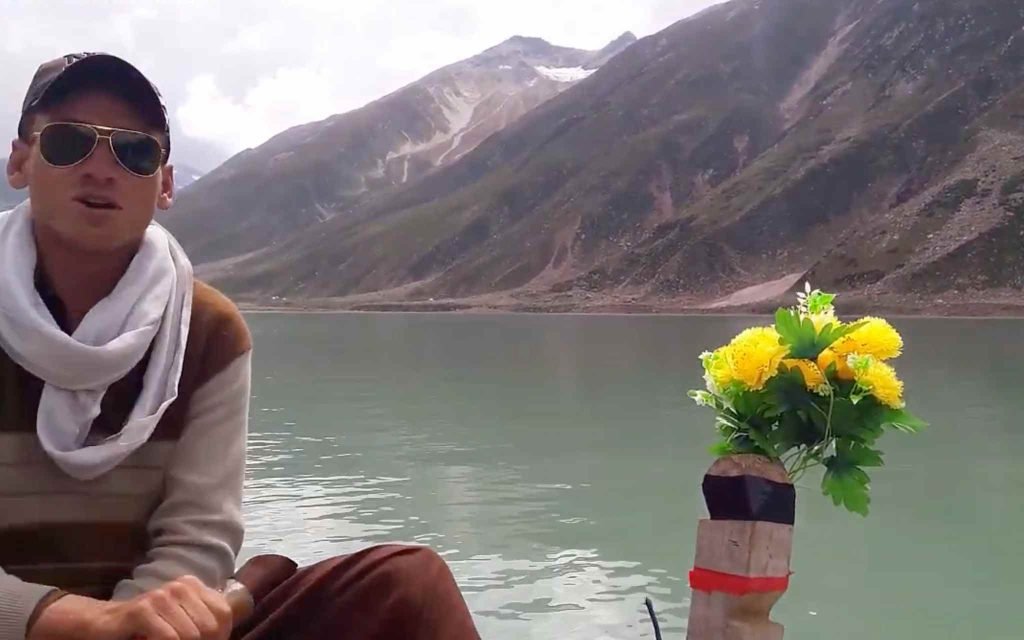

Simple rowboats are usually available in peak season when winds are calm. Expect short, guided circuits near the shore for safety. Wear a life jacket, keep cameras in waterproof bags, and avoid boating during sudden gusts or afternoon storms.
- Typical duration: 15 to 25 minutes per ride
- Best window: Morning, usually 8 am to 11 am
- Tip: Ask about weather before paying and confirm life jackets for all passengers
Camping at Jheel Saif ul Malook, gear checklist and leave no trace rules
Overnight camping is possible in fair weather with proper preparation. Nights are cold even in July, so plan for sub zero wind chill. Use pre used pitches to protect fragile turf and pack out all waste.
- 4 season tent
- Stable in alpine winds and sudden showers
- Insulated sleeping system
- Rated for near freezing temperatures
- Cook and light kit
- Butane or propane stove, headlamp with spare batteries
- Waste plan
- Carry trash bags and follow park guidance on waste disposal
Photography at Jheel Saif ul Malook, pro compositions and timing
Arrive at blue hour for mirror reflections before winds ruffle the surface. Frame Malika Parbat in the background and use leading lines from the shore. Night photography is excellent on clear, moonless nights, but keep a safe distance from the waterline and carry a reliable headlamp.
- Lens picks: 16 to 35 mm for wide vistas, 70 to 200 mm for compressing peaks
- Settings starter: f 8 to f 11, ISO 100 to 200, tripod mandatory
- Night tip: Test focus at infinity with live view and manual focus
Easy activities at Jheel Saif ul Malook, horse rides and shoreline walks
Short horse rides are common near the lakeside in high season. Keep walks short and gentle for children and older travelers to avoid altitude fatigue. Hydrate often and take sitting breaks with a view.
Where to Stay and What to Eat Near Jheel Saif ul Malook
Naran hotels near Jheel Saif ul Malook, how to choose by budget and season
Base yourself in Naran, then visit the lake as a half day trip. In peak months, book in advance. Check heating availability for shoulder season nights and look for secure parking if you arrive late.
Camping support near Jheel Saif ul Malook, rentals and realistic expectations
Limited rentals exist in town during summer, but quality varies. Inspect tents and stoves before you commit, and bring your own sleeping bags if possible. Always confirm fuel availability.
Food near Jheel Saif ul Malook, tea stalls and hygiene basics
Simple tea stalls and snacks are common in season. For full meals, dine in Naran before or after your visit. Choose hot, freshly cooked items and bottled or boiled water.
Wildlife and Biodiversity at Saiful Muluk National Park
Alpine flora around Jheel Saif ul Malook, bloom windows and fragile meadows
Expect alpine herbs and wildflowers from late June to August. Stay on durable surfaces to protect plants and avoid trampling wet meadows after rain.
Aquatic life at Jheel Saif ul Malook, brown trout and clear water ecology
The cold, clear water supports limited but interesting aquatic life. Trout sightings are possible near inlets. Do not feed fish or birds, and never discard food into the lake.
Bird and mountain wildlife near Jheel Saif ul Malook, watch with care
Look for wagtails, choughs, and occasional raptors. Maintain distance, stay quiet, and use binoculars. Wildlife viewing is best in early morning and late afternoon.
FAQ, Quick Answers About Jheel Saif ul Malook
How deep is Jheel Saif ul Malook, and why do sources differ
Most modern references list a maximum depth near 34 meters, while older or informal sources call it unknown. Treat 34 meters as the working figure and note that measurements can vary by method and season. For background reading, see the encyclopedia entry on the lake at
Lake Saiful Muluk.
What are typical jeep costs from Naran to Jheel Saif ul Malook
Expect PKR 2,000 to PKR 4,500 for a round trip jeep in peak season, based on bargaining, fuel prices, and demand. Confirm inclusions, waiting time, and safety gear before you depart. You can cross check recent traveler reports on
TripAdvisor.
Can you camp overnight at Jheel Saif ul Malook, and is it safe
Yes in fair weather, if you have the right gear and follow park rules. Nights are very cold and winds can rise suddenly. Camp away from the waterline, secure tents, and keep food sealed.
Is Jheel Saif ul Malook accessible in winter, what are the risks
Access is very limited from November to early spring due to heavy snow and ice. Only experienced teams with proper gear and local guides should attempt visits. Always confirm conditions in Naran on the day you travel.
What wildlife can you see around Jheel Saif ul Malook
Seasonal alpine flowers, small songbirds, and occasional raptors are common. Respect distance and never attempt to feed wildlife.
How Jheel Saif ul Malook Compares, other iconic lakes to consider
Jheel Saif ul Malook versus Attabad, Lulusar, and Sheosar
Attabad is famous for turquoise fjord like water and boat tours, Lulusar offers roadside access on the way to Babusar, and Sheosar is a Deosai plateau jewel with vast meadows. Jheel Saif ul Malook stands out for the Malika Parbat backdrop, cultural legend, and short jeep approach from a major tourist town.
Which lake is best for first time visitors versus photographers
First timers often prefer Jheel Saif ul Malook for easy logistics and the legendary story. Photographers can choose Jheel Saif ul Malook for sunrise reflections, Attabad for dramatic cliffs, and Sheosar for high plateau skies.
For official travel updates and national park context, consult the KP tourism pages and the Pakistan Tourism Development Corporation at
PTDC.
Conclusion, Plan Your Visit to Jheel Saif ul Malook With Confidence
Jheel Saif ul Malook is more than just a scenic spot in Pakistan’s Kaghan Valley — it is a blend of natural wonder, cultural heritage, and high altitude adventure. Whether you are drawn by the legendary love story, the chance to photograph Malika Parbat’s reflection, or the thrill of a jeep ride along rugged mountain tracks, this alpine lake delivers an unforgettable experience. Plan your trip around the best weather months, book reliable transport, and pack with both comfort and safety in mind. Above all, travel responsibly to help preserve this pristine destination for future generations.
Primary CTA, Plan your trip with TrulyPakistan
Make your visit seamless and memorable. Plan your trip with TrulyPakistan today — from tailored itineraries to guided tours, we provide the local expertise and logistical support you need for a stress free journey.
Author and References
Author, ZunNurain Khalid, Travel and Tourism Specialist
ZunNurain Khalid is the Founder of TrulyPakistan and a travel and tourism specialist with extensive experience in promoting Pakistan’s destinations. Having explored the Kaghan Valley multiple times, he brings firsthand knowledge of seasonal conditions, local culture, and sustainable travel practices. His mission is to connect travelers with authentic experiences while supporting community based tourism initiatives.

